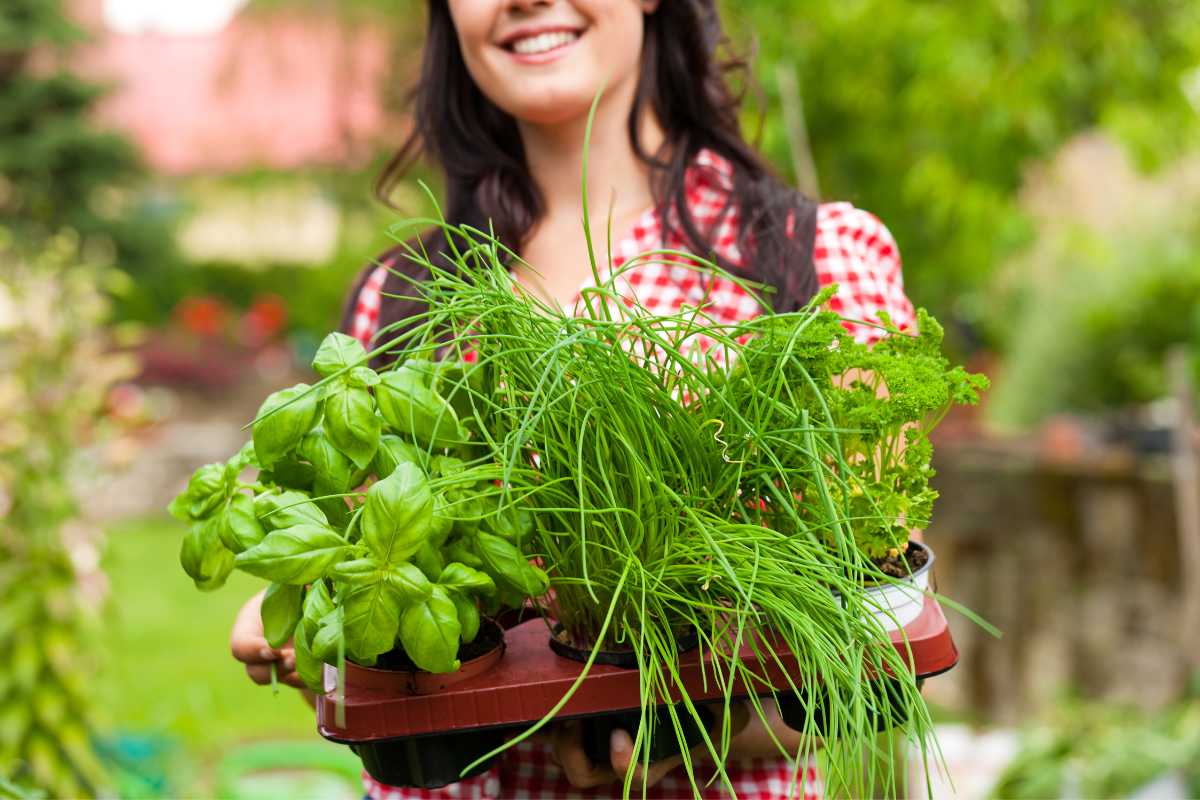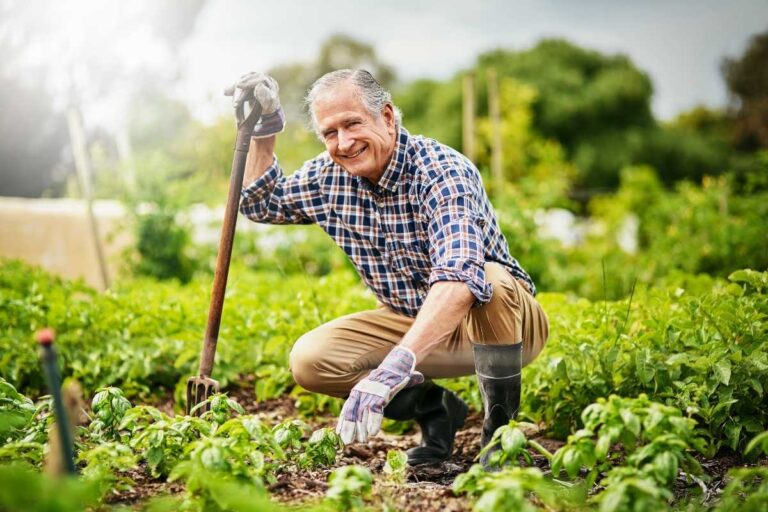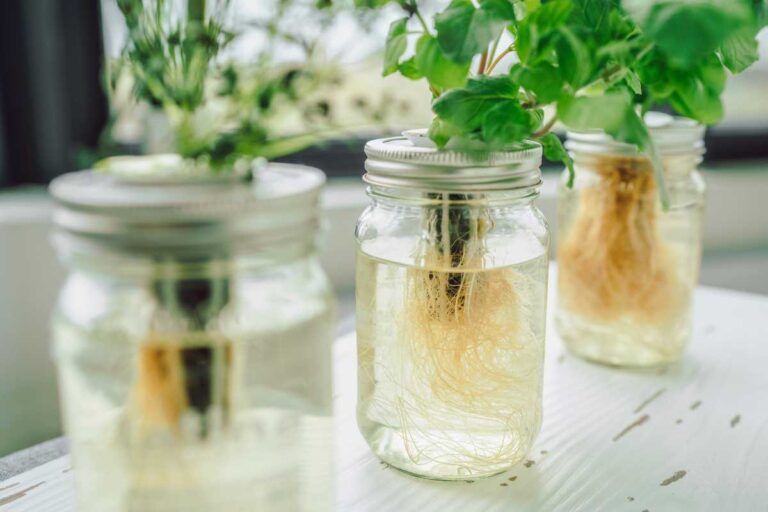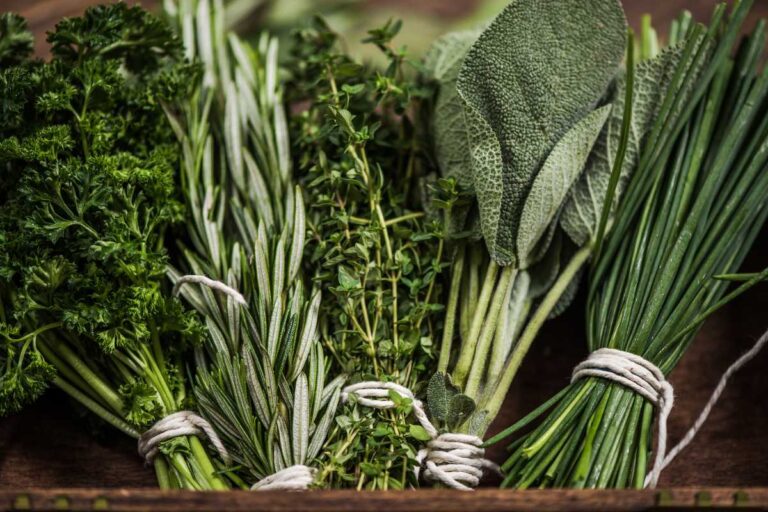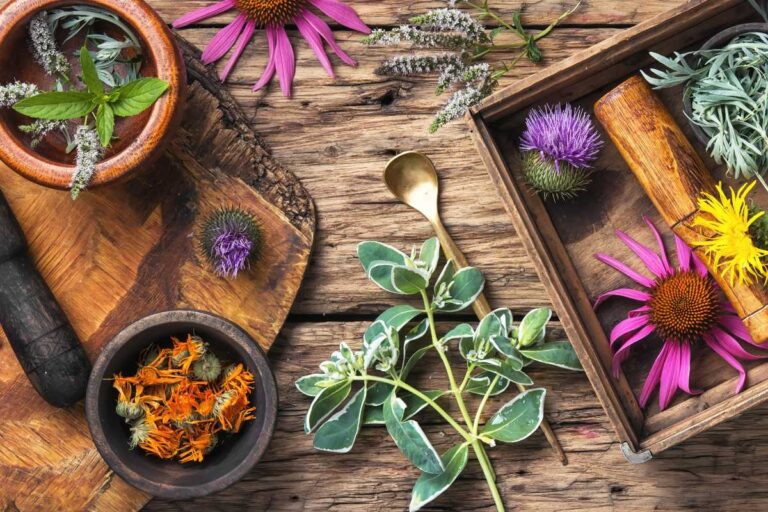The Best Herbs To Grow In Your Garden: Ultimate Guide
The Best Herbs To Grow In Your Garden: Ultimate Guide
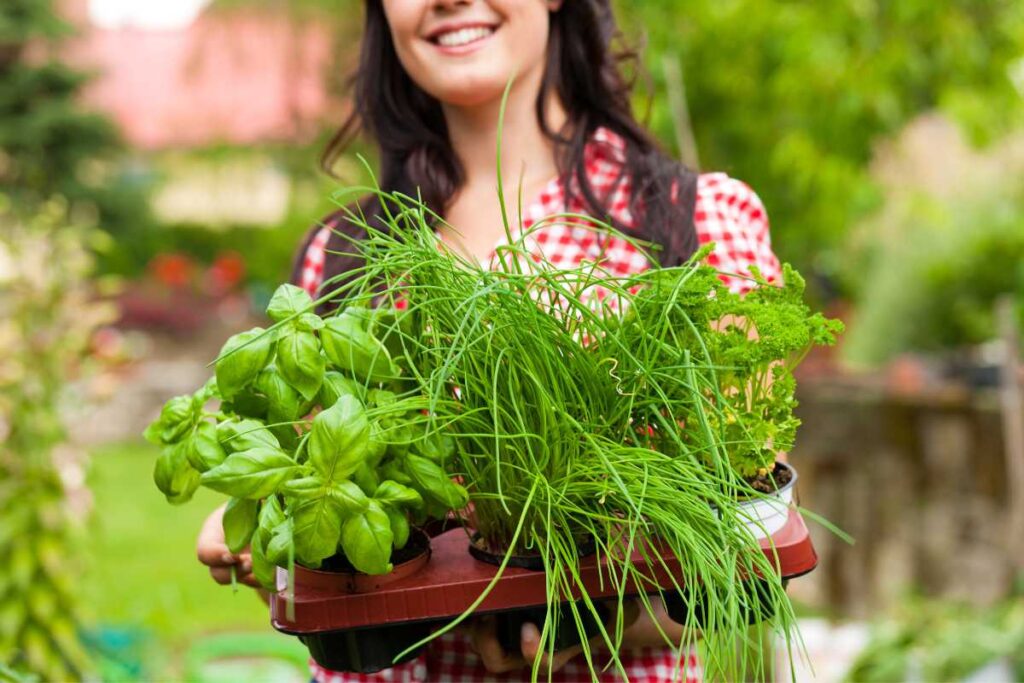
Gardening enthusiasts and culinary connoisseurs alike are constantly seeking ways to enhance their cooking and well-being. One rewarding and sustainable hobby that accomplishes both is growing an herb garden.
The best herbs to grow in your garden offer a variety of uses, from adding flavor to dishes to providing medicinal benefits.
By cultivating perennial herbs with their vibrant green leaves, individuals can enjoy a continuous supply of fresh ingredients right at their fingertips. These versatile plants not only thrive in various weather conditions but also serve as attractive ground cover options for any garden bed or spot.
Moreover, the evergreen nature of these herbs ensures a consistent supply throughout the seasons. Whether it’s the refreshing aroma of mint or the earthy fragrance of rosemary, each herb brings its unique character and taste to elevate your culinary creations.
So let’s delve into the world of herbal wonders and discover how you can transform your garden into a haven of flavors and well-being.
| Herb | Ease of Growth | Best Uses |
|---|---|---|
| Basil | Easy | Cooking |
| Mint | Easy | Tea |
| Rosemary | Easy | Cooking |
| Thyme | Easy | Cooking |
| Parsley | Easy | Cooking |
| Chives | Easy | Cooking |
| Cilantro | Easy | Cooking |
| Dill | Easy | Pickling |
| Sage | Easy | Cooking |
| Oregano | Easy | Cooking |
Tired of struggling with outdoor herb gardens in unpredictable weather? Discover the secret to successful herbal gardening indoors and enjoy fresh herbs year-round. Check out our article now!
Easy-to-Grow Herbs for Beginners
Starting your own herb garden can be a rewarding and fulfilling experience, especially when you choose herbs that are easy to grow. Whether you have a green thumb or are new to gardening, these low-maintenance herbs are perfect for beginners.
With minimal care required, they will thrive in different climates and provide you with an abundance of flavorful ingredients for your dishes.
Rosemary: A Hardy Perennial That Adds Flavor to Your Meals
Rosemary is a versatile herb that is well-suited for beginners. This tender perennial thrives in both warm and cool climates, making it ideal for various regions. Its needle-like leaves add a distinct flavor to vegetables, salads, soups, and even chicken dishes.
Growing rosemary from seed may be challenging for beginners, so it’s recommended to start with young plants from a local nursery.
Ensure the soil is well-drained and place the plant in an area that receives at least six hours of sunlight daily. With proper care, rosemary can grow into a bushy shrub that adds beauty and aroma to your garden.
Parsley: A Common Ingredient with Multiple Uses
Parsley is another easy-to-grow herb that every beginner should consider planting in their garden. It is a hardy biennial herb known for its vibrant green leaves and fresh flavor. Parsley can be used as a garnish or added to salads, soups, and various dishes to enhance their taste.
To grow parsley successfully, sow the seeds directly into the soil after the last frost date or start them indoors four weeks earlier. Ensure the soil remains moist but not waterlogged throughout the growing season.
With its deep roots and tolerance for partial shade, parsley can thrive alongside other herbs or vegetables in your garden.
Chives: A Versatile Herb with Edible Flowers
Chives are one of the easiest herbs to grow as they require minimal care and can adapt to various growing conditions. These slender green stalks are known for their mild onion flavor and are commonly used in salads, soups, and as a garnish.
Chives also produce beautiful purple flower buds that are not only visually appealing but also edible. To grow chives, plant the seeds or divide the existing clumps in early spring.
Ensure they receive at least six hours of sunlight each day and water them regularly to keep the soil evenly moist. With their quick growth and ability to thrive in small spaces, chives are perfect for beginners with limited gardening experience.
Sage: A Fragrant Herb for Culinary Delights
Sage is a hardy perennial herb that is both drought-tolerant and easy to grow. Its velvety gray-green leaves release a strong aroma when rubbed or crushed, adding depth to your culinary creations.
Sage pairs well with poultry dishes, stuffings, and sauces, making it an essential herb for any kitchen garden. Start sage from seeds indoors six to eight weeks before the last frost date or directly sow them outdoors once the soil has warmed up.
Place sage plants in a sunny location with well-drained soil and space them 18-24 inches apart to allow proper air circulation. With its new growth each year, sage will provide you with abundant harvests that can be dried or used fresh.
Growing Herbs in a Garden or Container: A Comprehensive Guide
Growing herbs is a rewarding endeavor that not only adds flavor to your dishes but also enhances the beauty of your surroundings. Whether you have a spacious garden or limited space, you can cultivate a variety of herbs to enjoy their numerous benefits.
In this comprehensive guide, we will explore the best ways to grow herbs both in traditional gardens and containers, providing you with step-by-step instructions and valuable insights.
Traditional Gardens vs. Containers: Benefits and Challenges
Before diving into the specifics, it’s crucial to understand the benefits and challenges associated with growing herbs in traditional gardens versus containers. Traditional gardens offer ample space for herb growth and allow perennials to establish deep roots, resulting in robust plants. These gardens provide optimal conditions for herbs that thrive in full sun.
On the other hand, container gardening presents an excellent alternative for those with limited outdoor space or who prefer mobility. Containers offer flexibility by allowing you to move your herbs around depending on sunlight availability or changing weather conditions.
Moreover, they are ideal for growing perennial herbs that require specific soil conditions or partial shade.
Soil Preparation: Setting the Foundation for Success
To ensure healthy herb growth, proper soil preparation is paramount. For traditional gardens:
- Clear the area from any weeds or debris.
- Loosen the soil using a garden fork or tiller.
- Incorporate organic matter such as compost to improve drainage and nutrient content.
- Level the area before planting your chosen herb varieties.
For container gardening:
- Select an appropriate container based on the size of your herb plants.
- Fill it with well-draining potting mix enriched with organic matter.
- Ensure there are sufficient drainage holes at the bottom of the container.
Planting and Watering Techniques
Once your soil is ready, it’s time to plant your chosen herbs:
- Dig a hole slightly larger than the herb’s root ball.
- Gently remove the plant from its nursery container, being careful not to damage the roots.
- Place the herb in the hole and backfill with soil, pressing it firmly around the base.
- Water thoroughly immediately after planting.
When it comes to watering your herbs:
- In traditional gardens, water deeply but infrequently, allowing the top inch of soil to dry out between watering sessions.
- In containers, ensure proper drainage by emptying any excess water that collects in saucers or trays.
Maintaining Healthy Herb Plants
To keep your herbs thriving throughout their growth cycle:
- Regularly monitor moisture levels in both traditional gardens and containers.
- Apply organic mulch around plants to conserve moisture and suppress weed growth.
- Pinch off any flowers that appear on perennial herbs to encourage continuous leaf production.
- Harvest leaves regularly for culinary use or drying.
By following these steps and maintaining optimal growing conditions, you can enjoy a bountiful herb garden or container throughout the year.
Tips for Successful Container Gardening with Herbs
Container gardening is a fantastic option for those who want to grow herbs but have limited space. With the right techniques and knowledge, you can ensure your herb plants thrive in containers, providing you with an abundant harvest. Here are some essential tips to help you achieve success in container gardening with herbs.
Suitable Container Sizes
Choosing the right container size is crucial for the health and growth of your herbs. While most herbs don’t require large pots, it’s essential to provide enough space for their roots to spread out. Generally, a container that is 6-12 inches deep and wide should be sufficient for most herb varieties. However, larger plants like rosemary may need deeper pots.
Proper Drainage
Good drainage is vital when growing herbs in containers since excess water can lead to root rot and other problems. Ensure your chosen containers have drainage holes at the bottom to allow water to escape freely. You can also place a layer of gravel or small stones at the bottom of the pot before adding soil to enhance drainage further.
Choosing the Right Potting Mix
Using high-quality potting mix is key to successful container gardening with herbs. Opt for a well-draining mix specifically formulated for containers, as it will provide adequate nutrients while allowing excess moisture to drain away. Avoid using regular garden soil as it may become compacted and hinder root growth.
Sunlight Requirements
Most herbs thrive in full sun conditions, requiring at least six hours of direct sunlight each day. When selecting a spot for your herb containers, choose an area that receives ample sunlight throughout the day. If you have limited access to natural light, consider using artificial grow lights or placing your containers near windows that receive maximum sunlight.
Regular Fertilization Techniques
To maximize your herb harvests, regular fertilization is essential. Herbs grown in containers often deplete nutrients more quickly than those planted in the ground. Use a balanced, slow-release fertilizer or organic options to provide your herbs with the necessary nutrients. Follow the instructions on the fertilizer packaging for application rates and frequency.
Harvesting Techniques
Proper harvesting techniques play a crucial role in maintaining healthy herb plants. Regularly trim your herbs by snipping off the top leaves, which encourages bushier growth and prevents them from becoming leggy. Avoid removing more than one-third of the plant at a time to ensure it can continue growing and producing fresh leaves.
Watering Considerations
Container-grown herbs may require more frequent watering than those planted in garden beds due to their limited soil volume. However, it’s essential not to overwater them, as this can lead to root rot.
The best way to determine when your herbs need watering is by checking the moisture level of the soil with your finger. Water only when the top inch of soil feels dry to the touch.
By following these tips for successful container gardening with herbs, you’ll be well on your way to enjoying a bountiful harvest of fresh flavors right from your own garden.
Whether you have limited space or simply prefer having your herbs close at hand, container gardening provides an excellent solution for growing these versatile plants. Happy gardening!
Best Herbs for Container Gardening and Kitchen Gardens
Container gardening and kitchen gardens are excellent options for those with limited space or who want easy access to fresh herbs. Whether you have a small balcony, patio, or even just a sunny windowsill, growing herbs in pots can be a rewarding experience.
Versatile Basil Varieties
Basil is a staple herb in many culinary dishes and fortunately, it adapts well to container gardening. With its vibrant green leaves and distinctive aroma, basil adds a burst of freshness to salads, pasta sauces, and even cocktails. Consider these popular basil varieties for your pot:
- Sweet Basil: The classic variety with its slightly sweet flavor is perfect for traditional Italian dishes like Caprese salad or homemade pesto.
- Thai Basil: This aromatic herb lends an exotic touch to stir-fries and curries with its licorice-like flavor.
- Lemon Basil: As the name suggests, lemon basil offers a delightful citrusy twist that pairs beautifully with seafood dishes or refreshing summer beverages.
Compact Thyme Cultivars
Thyme is another versatile herb that thrives in pots due to its compact growth habit. Its earthy fragrance complements various savory dishes such as roasted meats and vegetables. Here are some thyme cultivars ideal for container gardening:
- Common Thyme: This classic variety boasts small leaves packed with intense flavor—perfect for seasoning soups and stews.
- Lemon Thyme: With its subtle lemon undertones, lemon thyme adds brightness to grilled fish or roasted chicken.
- Creeping Thyme: Known for its low-growing habit and fragrant foliage, creeping thyme cascades beautifully over the edges of pots while releasing a pleasant aroma when brushed against.
Lesser-Known Gems: Lemon Balm and Stevia
While basil and thyme are well-known herbs, there are some lesser-known gems that deserve a spot in your container garden or kitchen. These herbs offer unique flavors that can elevate your culinary creations:
- Lemon Balm: With its lemony scent and mild citrus taste, lemon balm is a delightful addition to teas, desserts, and fruit salads.
- Stevia: Known for its natural sweetness, stevia leaves can be used as a sugar substitute in beverages, baked goods, and even homemade preserves.
By growing these lesser-known herbs alongside the more popular ones like basil and thyme, you can experiment with new flavors and expand your culinary repertoire.
Companion Planting Tips for Herb Gardens
Companion planting is a technique that can unlock the secrets of promoting healthier growth and deterring pests naturally in your herb garden. By strategically pairing compatible herbs alongside vegetables or flowers, you can maximize space utilization while creating a harmonious environment for your plants to thrive.
Uncover the secrets of companion planting with herbs
One of the key benefits of companion planting is its ability to enhance the growth and health of plants by harnessing their natural synergies. When certain herbs are grown together, they can provide mutual support, improve soil fertility, attract beneficial insects, repel pests, and even enhance flavors.
For instance, growing dill plants near cabbage or tomatoes can deter cabbage worms and tomato hornworms due to their strong aroma.
Learn which combinations work synergistically together
To ensure successful companion planting in your herb garden, it’s important to be aware of which combinations work well together and avoid potential conflicts between certain plants. Some popular examples include:
- Basil and Tomatoes: Basil acts as a natural insect repellent for tomatoes while enhancing their flavor.
- Chives and Carrots: Chives help deter carrot flies that can damage carrot crops.
- Marigolds and Herbs: Marigolds repel nematodes and other harmful insects while attracting pollinators.
By understanding these synergistic relationships between different herbs, you can create a balanced ecosystem within your garden.
Maximize space utilization with strategic pairings
If you have limited space in your herb garden, companion planting allows you to optimize every inch by strategically pairing compatible herbs alongside other plants. For example:
- Planting parsley next to roses not only enhances their fragrance but also attracts hoverflies that feed on aphids.
- Growing chamomile near cucumbers can improve their flavor and increase their resistance to diseases.
By combining herbs with vegetables or flowers that have similar growing conditions, you can create a visually appealing and productive garden.
Utilize raised beds and pots for flexibility
To further maximize space utilization and provide optimal growing conditions, consider using raised beds or pots for your herb garden. Raised beds offer better drainage, prevent soil compaction, and make it easier to control weeds.
Pots allow you to move herbs around based on sunlight requirements or seasonal changes. Herbs like mint that tend to spread aggressively can be contained within pots to prevent them from overpowering other plants in the garden.
Optimal light conditions for herb gardens
Most herbs thrive in sunny locations; however, some varieties prefer partial shade. When planning your herb garden, take into account the sunlight requirements of each plant. For instance:
- Full Sun: Herbs like rosemary, thyme, and oregano require at least six hours of direct sunlight per day.
- Partial Shade: Herbs such as cilantro and parsley can tolerate partial shade but still need a few hours of direct sun.
By considering the light needs of your herbs, you can ensure they receive the appropriate amount of sunshine for healthy growth.
Incorporating companion planting techniques into your herb garden not only enhances its visual appeal but also promotes healthier growth and natural pest control.
Saving and Storing Herbs from Your Garden
Preserving the flavor and aroma of your freshly harvested herbs is essential to enjoy their goodness all year round.
With effective techniques and proper storage methods, you can extend the usability of your herbs beyond their growing season. Let’s explore various ways to save and store herbs from your garden.
Air Drying
Air drying is a simple yet efficient method for preserving herbs. Start by harvesting your herbs when they are at their peak, just before flowering.
Gather small bunches of herbs, tie them with twine, and hang them upside down in a warm, dry location away from direct sunlight. A sunny windowsill or an airy room works perfectly for this purpose.
Freezing
Freezing is another popular method that allows you to retain the fresh taste of your herbs. Begin by washing the harvested herbs thoroughly and patting them dry. Remove the leaves from the stems and place them in labeled freezer bags or ice cube trays with a little water or oil.
This way, you can easily add frozen herb cubes to soups, stews, or other dishes whenever needed.
Herb-Infused Oils and Vinegars
Creating herb-infused oils and vinegars not only preserves the flavors but also adds an extra dimension to your culinary creations. Fill a glass jar with washed and dried herb leaves or sprigs, then cover them completely with oil or vinegar of your choice.
Seal the jar tightly and let it sit in a cool dark place for a few weeks to allow the flavors to infuse properly.
Proper Storage for Future Use
To ensure long-term storage success, it’s crucial to store your dried herbs properly. Keep them in airtight containers away from direct sunlight, moisture, heat sources, or any extreme temperature fluctuations that could degrade their quality over time. Mason jars or resealable plastic bags work well for storing dried herbs.
Remember that different herbs have varying shelf lives. While some herbs, like basil and parsley, retain their flavors for up to a year, others may lose their potency much sooner. Regularly check your stored herbs for any signs of mold or deterioration.
Tips for Storing Different Varieties
Each herb has its own preferences. Here are some general guidelines:
- Water-loving Herbs: Store herbs with high moisture content, such as mint or chives, by wrapping them loosely in a damp paper towel before placing them in a plastic bag in the refrigerator.
- Leafy Herbs: For delicate leafy herbs like cilantro or dill, trim the stems and place them upright in a glass of water as you would with fresh flowers. Cover the leaves loosely with a plastic bag and change the water every few days.
- Woody Herbs: Hardy woody herbs like rosemary or thyme can be stored by bundling them together and securing with twine. Hang them upside down in a cool, dry location until they are completely dried out.
By following these storage tips and techniques, you can savor the flavors of your garden-fresh herbs throughout the year. Whether you prefer air drying, freezing, or creating herb-infused oils and vinegars, each method offers a unique way to preserve your harvest while adding zest to your culinary adventures.
Enhance Your Garden with the Top Herbs
Congratulations! You are now equipped with a comprehensive guide on growing herbs in your garden or containers. From easy-to-grow herbs for beginners to companion planting tips, you have learned valuable insights to create a thriving herb garden. Now it’s time to put your knowledge into action and start enjoying the benefits of fresh herbs right at your fingertips.
To get started, choose a few herbs that align with your preferences and gardening conditions. Consider factors such as sunlight, soil type, and available space. Remember to provide adequate care and attention to ensure healthy growth. With diligent effort, you’ll soon be harvesting an abundance of flavorful herbs for culinary delights or herbal remedies.
FAQs
Can I grow herbs indoors?
Yes, many herbs can be successfully grown indoors. Choose a sunny location near a window or use artificial grow lights to provide sufficient light. Select compact varieties that are well-suited for container gardening.
How often should I water my herb plants?
The watering frequency depends on various factors such as climate, soil type, and plant size. Generally, it is recommended to water herb plants when the top inch of soil feels dry. Avoid overwatering as it can lead to root rot.
Are there any pests that commonly affect herb plants?
Yes, some common pests that may affect herb plants include aphids, whiteflies, and spider mites. Regularly inspect your plants for signs of infestation and take appropriate measures such as using insecticidal soap or introducing beneficial insects like ladybugs.
How do I harvest herbs from my garden?
To harvest herbs, use sharp scissors or pruning shears to cut off the stems just above a leaf node or where new growth is emerging. Harvest in the morning when the essential oils are most concentrated for optimal flavor.
Can I dry and store my harvested herbs?
Absolutely! Drying herbs is a great way to preserve their flavors for future use. Tie small bunches of herbs together and hang them upside down in a well-ventilated area until completely dry. Once dried, store them in airtight containers away from direct sunlight.
Now that you have all the necessary information, it’s time to embark on your herb gardening journey. Enjoy the process of nurturing and harvesting your own fresh herbs, and elevate your culinary creations with delightful flavors straight from your garden. Happy herb gardening!

